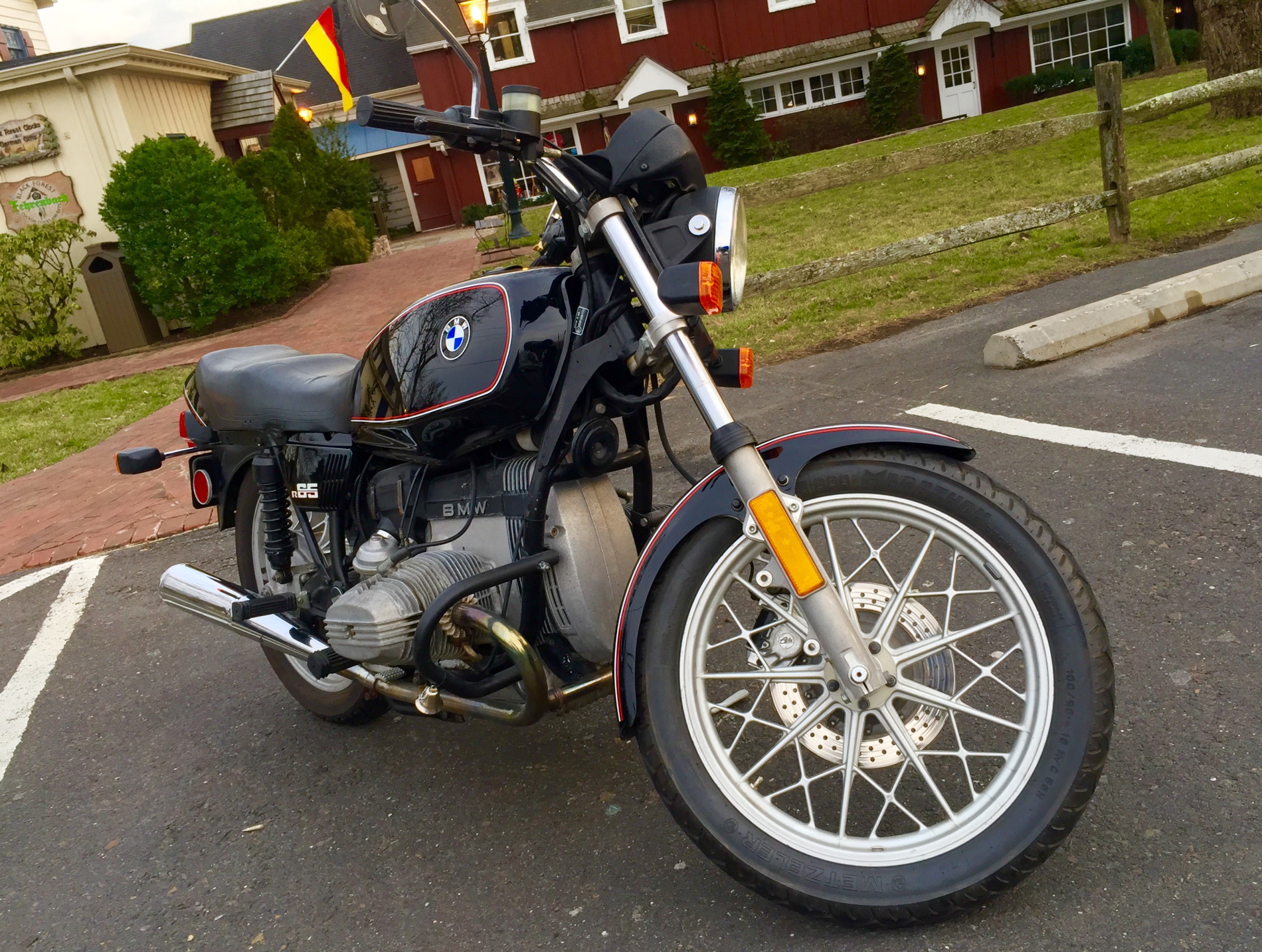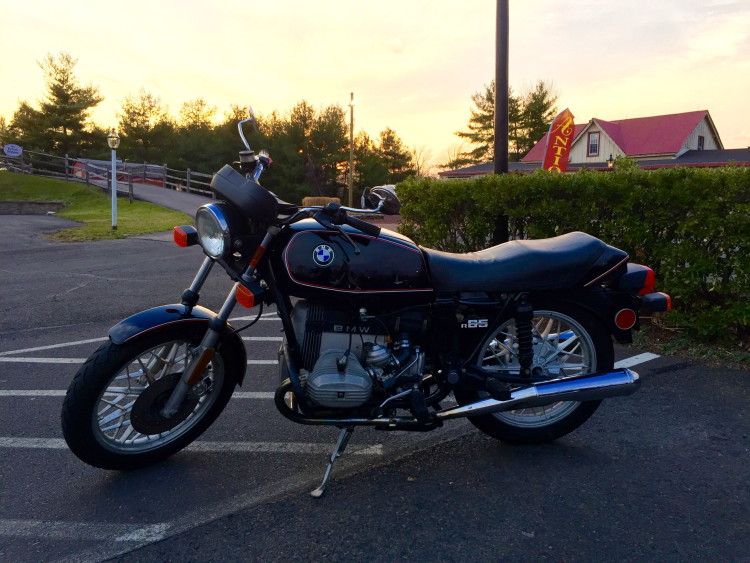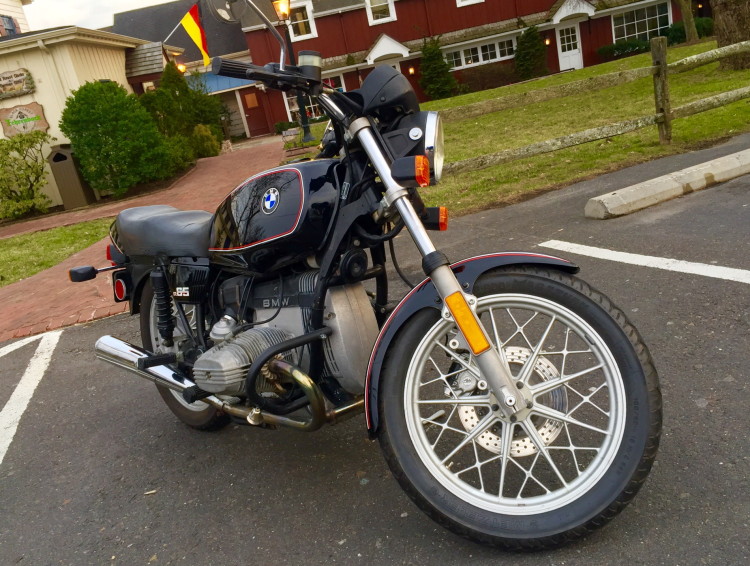As a motorcycle journalist, I enjoy riding motorcycles from many different manufacturers. That being said, more often than not, my preference adorns a blue and white propeller logo. As a consequence, of the three motorcycles I own, two are BMWs, though they are very different machines.
First I purchased my K 1200 S, a very fast and very heavy hyperbike, capable of going toe-to-toe with some of the fastest motorcycles on the planet, like the Suzuki Hayabusa or the Kawasaki ZX-14r. However, as time passed I realized that I wanted something that would offer me a vastly different riding experience, for days when wrestling the K 1200 around seemed unpalatable.
As opposed to the K 1200 S’ nearly 600lb wet weight, I wanted something very light and nimble. Due to the K 1200’s power, it is much better suited to rides of a brisk pace, but sometimes you just want to take a calm cruise. Too, the K is a modern bike with complex systems, making a very simplistic motorcycle very enticing. Also, in contrast to the K 1200, I wanted something with a more upright seating position. I wanted something unique and prestigious, something exclusive. Lastly, it had to be a reliable bike, as being stuck on the side of the road or having to watch your pride and joy get towed is an undesired outcome.
The criteria I outlined quickly narrowed my prospects. I very much like the BMW R nineT, but it too utilizes a nearly 1200cc engine, has modern complexities and still weighs nearly 500lbs wet. Another option was the Ducati Monster, but they are quite common where I live and with Ducati’s reputation of being unreliable, it was off of my list. More time passed and it became evident that no manufacturer was currently producing a motorcycle which did not force me to compromise, so I expanded my search.
Still very fond of the R nineT, I began to consider the motorcycle from which BMW drew the inspiration for the R nineT, the R90. The R90 was, too, a vehicle upon which BMW built its reputation of elegance and reliability. It utilized a 898cc motor, a famous BMW boxer and was about as simple as a bike could be, without foregoing luxuries like a power ignition. Though, for an older bike, the R90 is still a relatively big bike. During my search for an excellent condition R90, I found something which seemed glaringly perfect, a 1980 BMW R65.
The R65, the very light, smaller sibling to the R90, was produced for just a few years. As a 650, producing only 45hp, it offered the perfect dose of diversity to my garage. Too, because it had a narrower engine, it could corner better than its bigger siblings. It weighed just over 430lbs wet. For context, the quintessential learner bike, the Kawasaki 250r, has a wet weight of around 380lbs. I knew this was the bike immediately. Not long after, it was mine. I purchased it sight unseen. The bike did have a little leak, but the dealer was sorting it out before I took delivery, so I was very satisfied.
Sadly, as the bike was quite far from me, I had to have it delivered, and in the process, it was damaged. This meant that during the first two month of ownership, I was having the bike brought back up to perfection. Six weeks or so were spent at the body shop, and due to the bike’s age and very low miles, a few weeks were spent at the local dealer getting some things refreshed. Then the time finally came, the day when I was able to take her home.
As I’m used to riding modern motorcycles, the first ride was spent just familiarizing myself with the bike, its dry clutch and its vintage bike quirks, like having to shut the fuel supply off every time I park the bike to prevent it from leaving a puddle of premium beneath it. Too, being almost 40 years old, as expected, the bike lacked some of the refinement of the motorcycles I’m used to riding. Beemers are typically fitted with clunky transmissions, yet, this transmission shifts very smoothly. Admittedly, not as smoothly as some of the Japanese standards or cruisers I’ve ridden, but they were also much newer than the R65.
More time went by and I had more opportunities to ride the bike. After becoming much more acquainted with the bike itself, I found that I was right in choosing this bike. In addition to the purchase price, I put a couple thousand dollars into the bike, most of which was due to the cosmetic damage and the bike being unused for long periods of time. Still, because of the bike’s age and concomitant simplicity, accessing and repairing parts on the bike was simple for the dealer, keeping labor costs in check. Also, due to its age, certain parts were a bit more difficult for the dealer to obtain, so this can be perceived as a proverbial ‘double-edged sword’. In fact, the head mechanic at my local BMW Motorrad dealer told me that his father once had an R65 and put over 80,000 miles on the bike, which took very good care of him along the way. Though I hadn’t originally planned to repaint the bike, as it was in excellent shape, the damage incurred in transport was the perfect ‘excuse’ for a new paint job, leaving the bike looking as if it just rolled off of the production line.
Aesthetics aside, the bike is tons of fun to ride. The little short stroke enjoys being revved up, giving you the feeling that you’re able to actually use a significant amount of the bike’s power. Too, the Metzeler tires fitted to the bike give you the traction and the confidence to really attack the corners when the mood strikes. It’s also great for slow speed cruising. Much like a vintage car, the R65 commands all of the attention when riding down Main Street. As I’ve said recently, riding is a very social activity, and the R65 is definitely a conversation starter. Owning this bike has given me not only an amazing ownership experience, but also a new and greater appreciation for the BMW Motorrad brand, a deeper understanding of what helped build the reputation of the brand we love today.
Visit the author on Instagram: @MikeAndHisBikes










































































